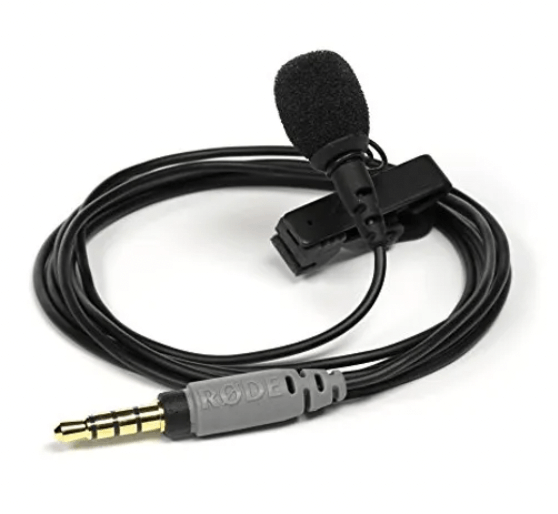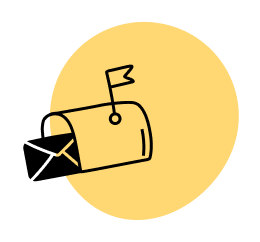One of the most important characteristics of a successful podcast is consistency. Keeping up with a publishing schedule is vital for building fans who eventually make it a routine to listen to your show.
Unfortunately — and I know this from experience — traveling can throw off your podcast recording schedule bigtime.
So what’s the best way to solve this problem?
Hit the record button while you’re traveling! And not just because you want to keep up with that schedule, but because some of the best conversations you’ll ever have are while you’re on the road and in person with people.
These are golden opportunities often wasted, but not anymore, because I’m going to tell you everything you need to make it work, and make it easy.
[Full Disclosure: This article contains affiliate links. As an affiliate, I receive compensation if you purchase through these links, at no extra cost to you. You can read my complete disclosure statement here.]
Equipment
Before you head out, it’s important to gather and pack the right equipment for your on-the-go recording sessions. In most cases, you’re not going to bring your normal, at-home podcast setup with you on the road.
With that said, if your normal setup includes a relatively small, all-in-one production console such as the Rodecaster Pro II, then that may be worth packing along with a couple of microphones and an SD card to meet your needs.
In most cases, however, a portable but powerful recording setup is what you’ll be looking for. Here are some options:
Rode SmartLav+ with Mobile Interface

The smallest and cheapest option combines a wired lavalier microphone and an interface to a device you likely already have access to: your mobile phone.
Whether you’re an iPhone or Android user, a Rode SmartLav+ microphone setup can connect directly to your device. Because it’s small, you can even attach it to a t-shirt or blouse and it’s completely out of the way.
I use this setup while on the go for both solo episodes and interviews. If you’re going to be doing an interview, be sure to get a dual mobile interface so you can plug in two microphones to record simultaneously.
This setup is limited in post-edit capability since it all records onto one track, but it’s the easiest and most flexible.
For a quick demo, watch this video that I recorded with my son a few years ago:
Zoom H6N

The Zoom H6N is the ultimate portable recorder that allows you to capture the best sound quality while you’re out. There are built-in microphones (and ones that you can swap out for different recording styles), and 4 microphone inputs for different XLR or TRS cables, which is awesome for group interviews.
This means you can have up to four different people, on four different microphones, recording into four different tracks at the same time. Instead of using your phone to record, this device uses an SD card to record your files, and it’s easy to import back into a computer when you get home or back to your hotel room.
This is the device I typically use when I’m on the go. I bring two microphones — such as the Samson Q2U — that connect via XLR, hit record, and the show is on. Be sure to also bring a couple of XLR cables as those are not usually included with USB-specific microphones that have XLR compatibility.
I don’t do any adding of intro songs or voiceovers while recording on this device — that all comes in post-edit. The ease of use and handheld portability is awesome. Also, I love the ability to see the tracks and the sound levels from each microphone so I know one isn’t too loud or too soft.
Quick tip: don’t forget your SD card! Trust me.
Headphones
Headphones are usually overlooked when it comes to recording on the go, but because you will likely not be in a sound booth or studio, and potentially in a crowded or trafficked area, it’s important to have headphones to be able to monitor the sound.
Is it too loud? Too soft? Is there too much background noise? The only way to really know is by listening to the audio as it’s coming in.
My absolute favorite are the Beyerdynamic DT 770 Pro studio headphones. I use these in my home studio, and also while I’m out and about.
They’re soft, comfortable, and sound amazing. They aren’t noise canceling, but they do the job when it comes to monitoring your sound in an environment that you might not be familiar with or have a lot of control over.
It’s up to you if you want to keep the headphones on while recording, but at the very least, test your audio with headphones on before you hit record. It would be a shame to have poor audio quality on your podcast when it could have been avoided with one quick test.
Video Camera
I won’t go too in-depth here, but video podcasts are becoming so popular, it’s pretty standard to turn on the camera when conducting an interview on the go. The audio is already taken care of, which is nice, but a nice shot with one camera (or more) can allow you to repurpose that opportunity — often in an interesting and visually appealing environment — onto a platform like YouTube, or perhaps in an online course.
The biggest concern for video is definitely lighting, and we don’t really want to bring heavy duty lights with us, do we?
If you’re going to be indoors, the best scenario would be to set up the interview space close to a window with indirect light and have the camera pointing away from it. This will put a nice wash of light on you and your interviewee.
If you’re outdoors, somewhere that has constant shade is nice. However, the environment and weather can make it difficult to keep everything consistent. But filming outdoors is pretty awesome, so it may be worth the sacrifice.
Finally, as far as which camera to use, use one that you’re familiar with already, if possible. A phone could work, or a point-and-shoot camera like a Sony ZV-1 with a tripod to screw it into (maybe even a SwitchPod).
Planning
When possible, try to plan an interview or recording session ahead of time. I can’t tell you how many times I’ve been to events where a friend and I say we’re going to record “at some point,” only to have it never happen because the time got away from us.
Here’s a quick order of operations:
- In an ideal scenario, connect before the travel or event happens. Yes, you can always meet new people and plan a podcast session ad hoc, but for the sake of your time and calendar, planning ahead is always best.
- Coordinate a time and place to meet. Scope out the spaces available for you to record that are as quiet and as echo-free as possible. Be sure you have permission to record in those spaces if they are in event areas. I once found an empty breakout room at an event, which was great, until a crowd of people came in mid-interview to prepare for the next presentation in that space.
- Get your interviewee’s contact information. This way, if plans change or someone is having trouble finding the other person, contact can be made and a solution can be found.
Some of my colleagues have gone so far as to rent a space for interviews. This could be a conference room, hotel room, or dedicated studio space at the facility that’s used all day just for this purpose.
Michael Hyatt, one of my mentors, once interviewed a dozen people, one after another, in a single hotel room. It took all day, but afterward, he had 12 interviews filmed and recorded for later use. It was a great use of his time.
Quick tip: bring spare batteries or a battery bank! The last thing you want to have happen is run out of power for the interview(s) you have scheduled.
Quick tip #2: Sometimes environmental noise is actually great for a podcast; it adds a different flavor and feel to the listening experience. If you are able to capture the sound of the space you’re in before your scheduled sessions, make a test recording first so that you can determine whether or not it’s going to work.
Recording the Conversation
Whether it’s a single recorded conversation or a dozen interviews in a single day like Michael Hyatt, it’s important to remember who you’re recording for. Your podcast listeners will soon hit play and engage (or disengage) with the conversation you’re having at that moment. So, be in the moment!
The reason I say this is because it can be very easy to become distracted when recording in a different environment, especially if it’s unfamiliar to you. So here’s the trick:
Be curious, and enjoy the conversation.
I always start my interview at home, before I hit record, by saying this to myself: “It’ll be like the two of us are at a coffee shop, just having a conversation.” You have the opportunity to do just that!
(Although I’ve learned that coffee shops are not actually the best for interviews. The espresso maker is a common nuisance that tends to dominate the conversation.)
The best thing about meeting and talking with people in person is that there’s a level of energy that you just cannot get in an interview over the internet. When you’re in the moment, the audience will feel like they’re there with you. Now, with a microphone in hand (or attached to a shirt) you can have a fantastic conversation, in real-time, and capture all of that great energy for them.
After the Interview
There are some items to take care of after the conversation is over. Typically, I do my best to upload files to Dropbox as soon as I can, that way they’re safe and can’t be stolen or lost.
Second, I also take notes from the interview itself (or dictate them) so I can remember the highlights. This is important because typically I’m recording the intros and outros to these episodes at home; if I wait too long, I’ll forget all the great stuff we chatted about.
Beyond the tech and the audio files, there’s one more important aspect of podcasting while traveling that I want to leave you with.
It’s easy to finish an interview, say your goodbyes, and move on. But here’s the thing: you just sat and had an in-depth conversation with someone in person! Real relationships can be built from that, especially for people who you’ve never really met before.
So don’t end the conversation when the record button gets pressed. Keep the conversation going when you can, perhaps during a coffee the next morning, dinner later on, or follow-up online later. Use this opportunity to nurture the connection you made — it might grow into something amazing!



